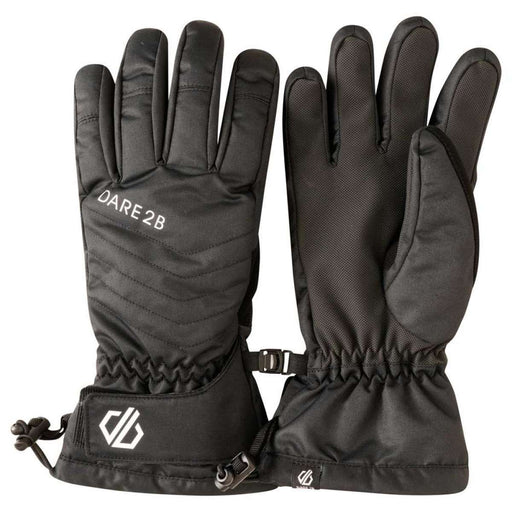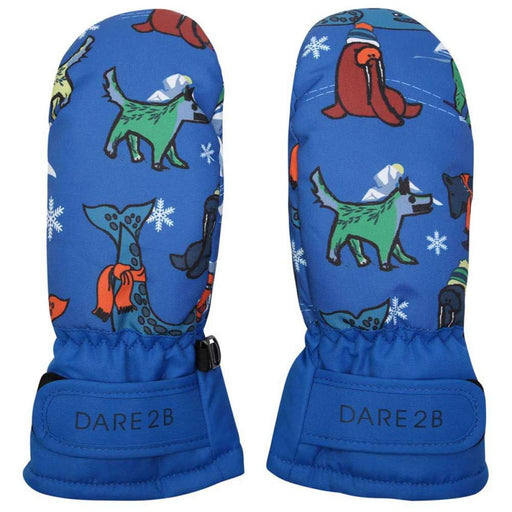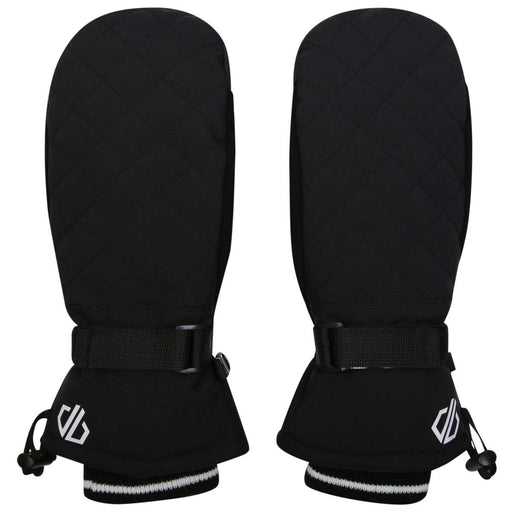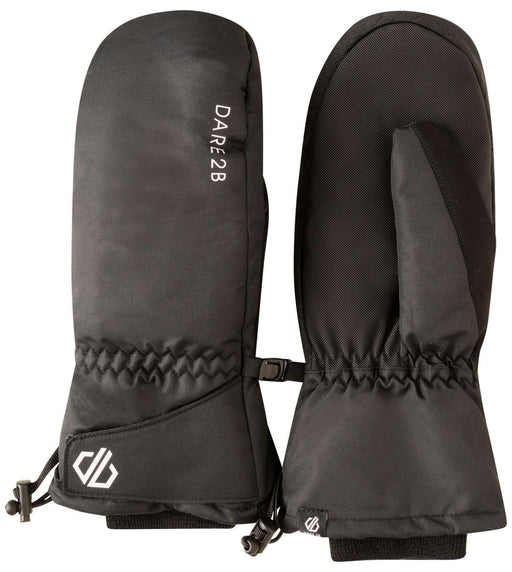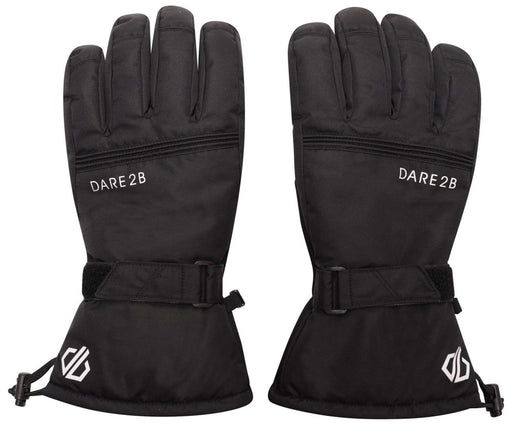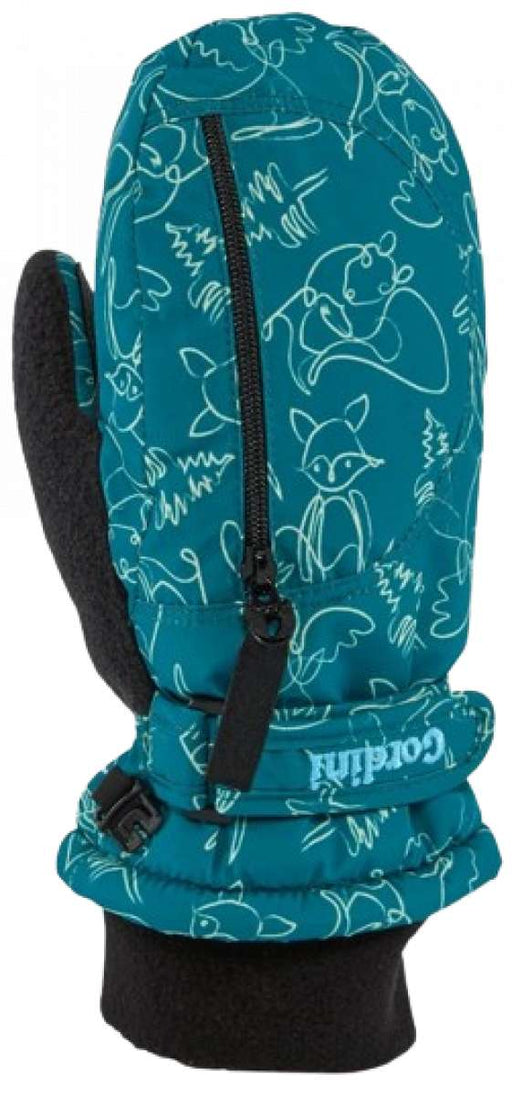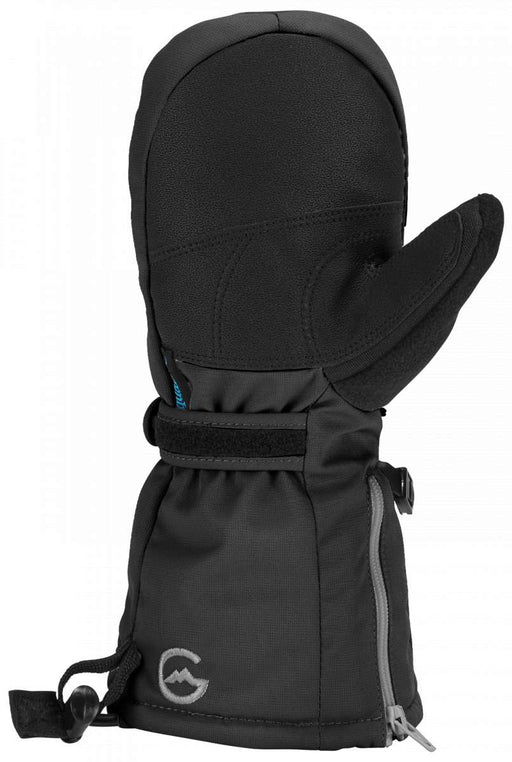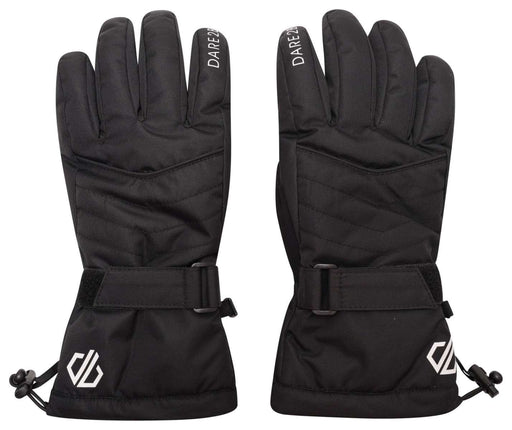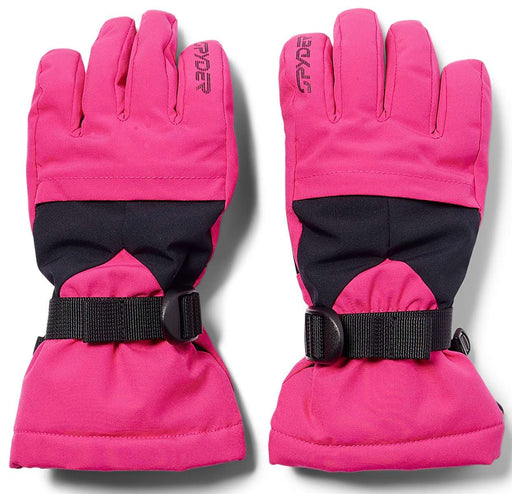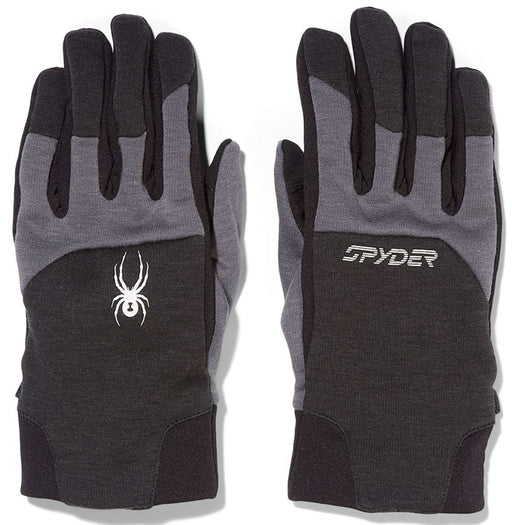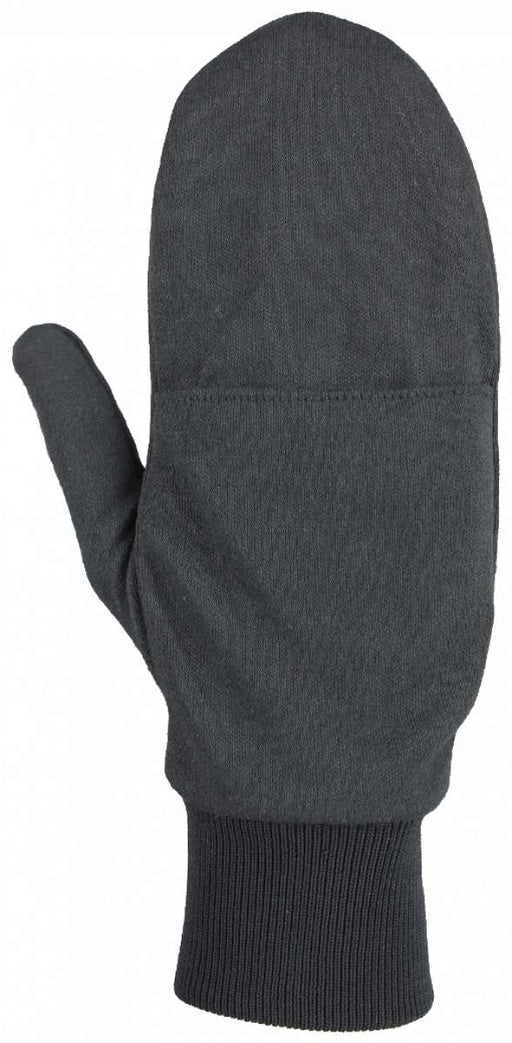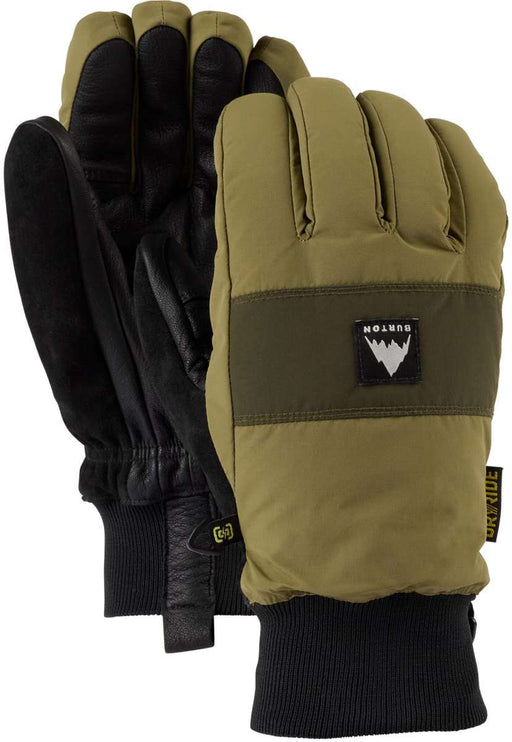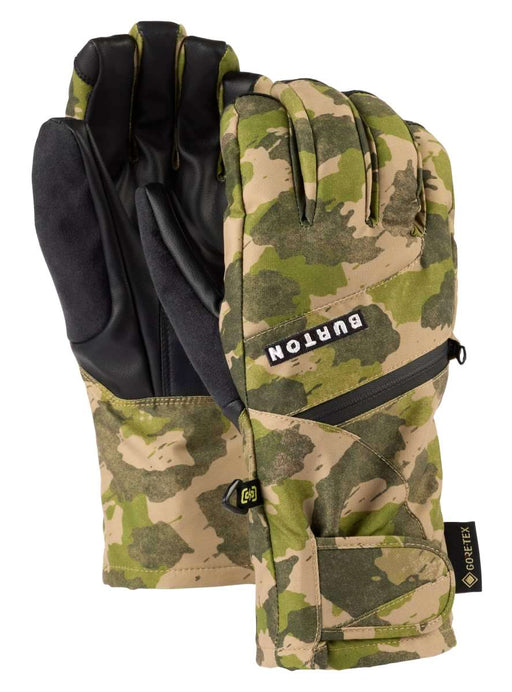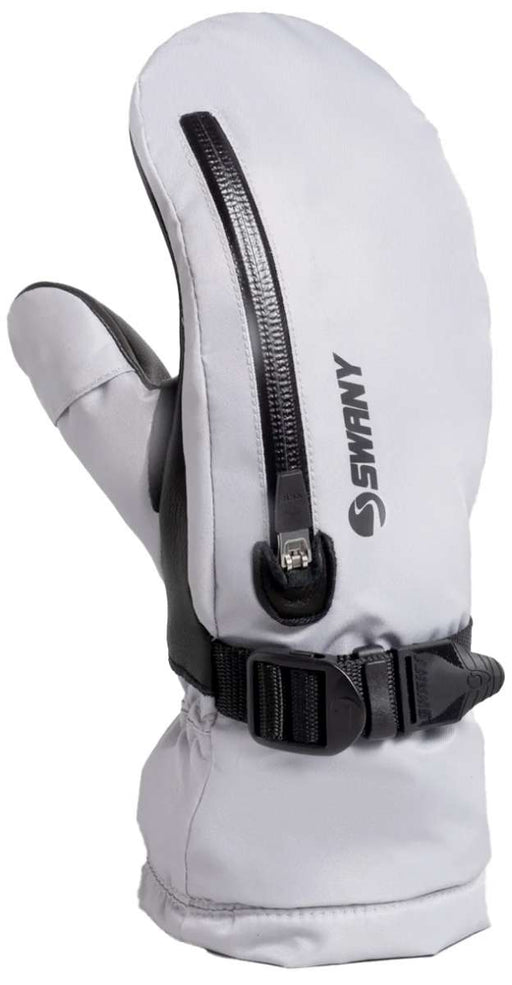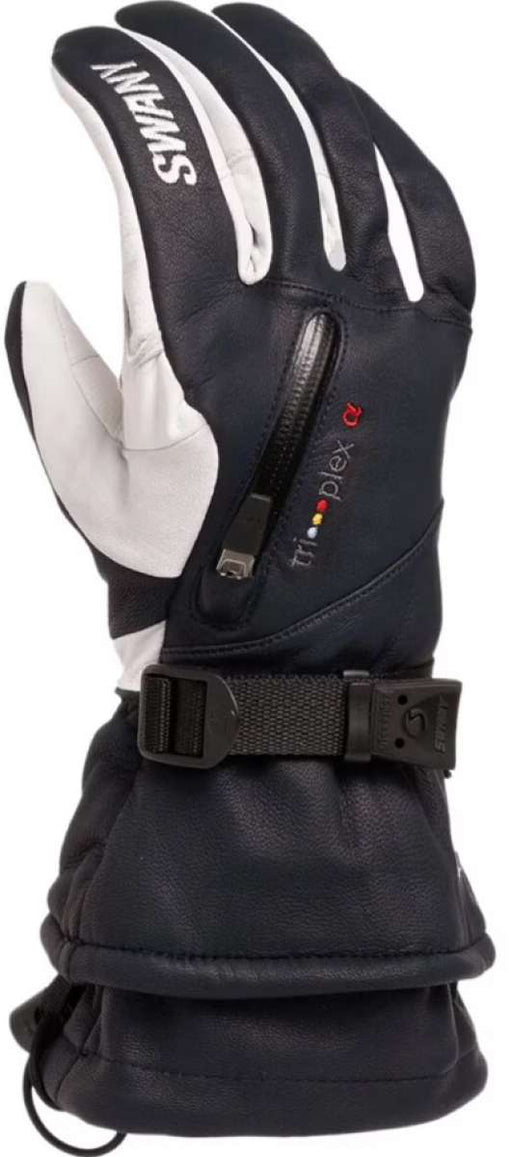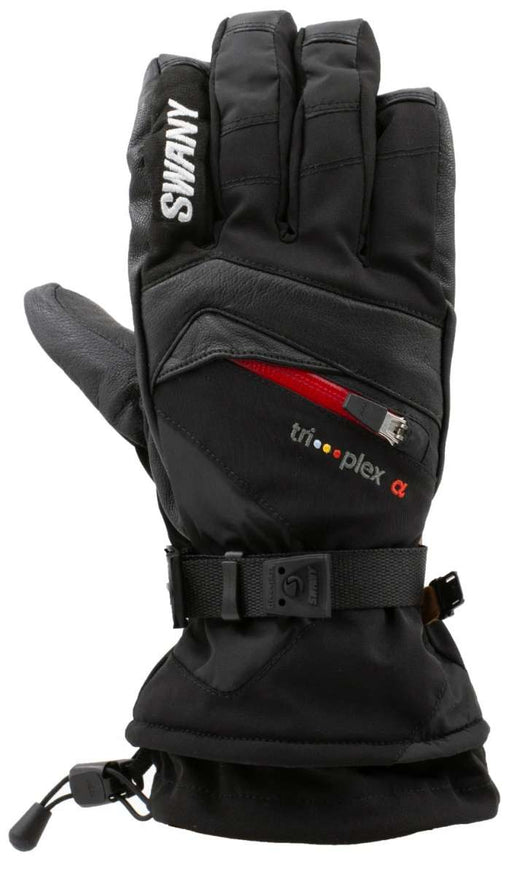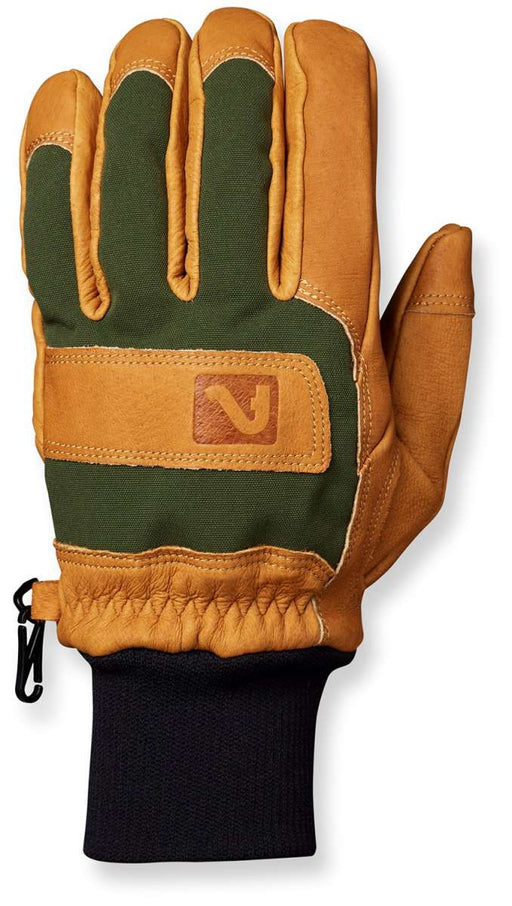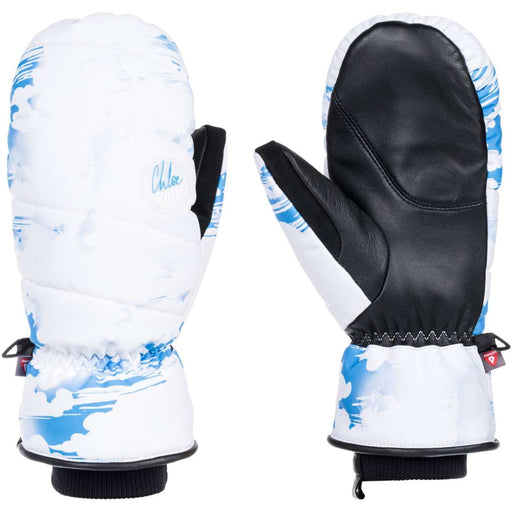Click for details
The Layering System
Base Layers: The Foundation
The foundation of any mountain layering system starts next to your skin. While it's tempting to throw on your favorite cotton t-shirt under your ski jacket, the key to staying comfortable lies in purpose-built base layers that actively manage moisture. As you ride, your body produces heat and sweat – even in freezing temperatures. The right base layer moves that moisture away from your skin to prevent the dreaded post-run chills and keep you warm all day long.
What to Look For:
- Merino wool is nature's performance fabric, offering excellent warmth, natural odor resistance, and temperature regulation across a wide range of conditions
- Synthetic materials like polyester and nylon dry incredibly quickly and are typically more durable
- Strategic stretch panels for unrestricted movement
- Flatlock seams to prevent chafing
- Thumbholes in tops to prevent sleeve ride-up
- Available in different weights for varying conditions
For most riders hitting destinations in Arizona, Utah, or Colorado, we recommend starting with a midweight base layer set. This versatile weight works across most conditions and can be paired with additional layers for those extra cold days. If you're planning multiple trips, consider adding a lightweight option for spring conditions and a heavyweight set for those early morning Telluride starts.
Featured Base Layers
-
Le Bent Core Lightweight Bottom Base Layer 2025
Le BentOriginal price $105.00 - Original price $105.00Original price$105.00$105.00 - $105.00Current price $105.00The Le Bent Core Lightweight Bottom Base Layer 2025 provides a breathable, flexible fit for all-day comfort in cool to mild weather. Its 200gm Sign...
View full detailsOriginal price $105.00 - Original price $105.00Original price$105.00$105.00 - $105.00Current price $105.00 -
Le Bent Core Lightweight Crew Top Base Layer 2025
Le BentOriginal price $105.00 - Original price $105.00Original price$105.00$105.00 - $105.00Current price $105.00The Le Bent Core Lightweight Crew Top Base Layer 2025 is designed for high comfort in cool to mild conditions, combining breathability and temperat...
View full detailsOriginal price $105.00 - Original price $105.00Original price$105.00$105.00 - $105.00Current price $105.00 -
Le Bent Women's Core Lightweight 3/4 Bottom Base Layer 2025
Le BentOriginal price $95.00 - Original price $95.00Original price$95.00$95.00 - $95.00Current price $95.00The Le Bent Women's Core Lightweight 3/4 Bottom Base Layer 2025 offers optimal comfort for active wear, featuring a breathable and odor-resistant m...
View full detailsOriginal price $95.00 - Original price $95.00Original price$95.00$95.00 - $95.00Current price $95.00 -
Le Bent Women's Core Lightweight Crew Top Base Layer 2025
Le BentOriginal price $105.00 - Original price $105.00Original price$105.00$105.00 - $105.00Current price $105.00The Le Bent Women's Core Lightweight Crew Top Base Layer 2025 offers an ideal foundation for comfort during mild to cool weather. Crafted with Le B...
View full detailsOriginal price $105.00 - Original price $105.00Original price$105.00$105.00 - $105.00Current price $105.00 -
Krimson Klover Mountain View 1/4 Zip Base Layer Top 2025
Krimson KloverOriginal price $120.00 - Original price $120.00Original price$120.00$120.00 - $120.00Current price $120.00The Krimson Klover Mountain View Base Layer Top is a vibrant and functional layer, featuring custom art by Mads Berg and made from eco-friendly mat...
View full detailsOriginal price $120.00 - Original price $120.00Original price$120.00$120.00 - $120.00Current price $120.00 -
Krimson Klover Women's Groove Base layer Top 2025
Krimson KloverOriginal price $120.00 - Original price $120.00Original price$120.00$120.00 - $120.00Current price $120.00The Krimson Klover Mountain Groove Base Layer Top is a performance base layer that blends artistic style and functionality, featuring custom artwor...
View full detailsOriginal price $120.00 - Original price $120.00Original price$120.00$120.00 - $120.00Current price $120.00 -
Krimson Klover Women's Powder Hound 1/4 Zip Base Layer Top 2025
Krimson KloverOriginal price $120.00 - Original price $120.00Original price$120.00$120.00 - $120.00Current price $120.00The Krimson Klover Multi Skiers Base Layer Top is a playful and comfortable option for outdoor activities, featuring colorful skier graphics and ma...
View full detailsOriginal price $120.00 - Original price $120.00Original price$120.00$120.00 - $120.00Current price $120.00 -
Krimson Klover Women's Multi Skiers Legging 2025
Krimson KloverOriginal price $99.00 - Original price $99.00Original price$99.00$99.00 - $99.00Current price $99.00The Krimson Klover Multi Skiers Legging is a fun, high-waisted legging featuring colorful skier illustrations, made from soft, eco-friendly materia...
View full detailsOriginal price $99.00 - Original price $99.00Original price$99.00$99.00 - $99.00Current price $99.00 -
Krimson Klover Women's Multi Skiers 1/4 Zip Base layer Top 2025
Krimson KloverOriginal price $120.00 - Original price $120.00Original price$120.00$120.00 - $120.00Current price $120.00The Krimson Klover Multi Skiers Base Layer Top is a playful and comfortable option for outdoor activities, featuring colorful skier graphics and ma...
View full detailsOriginal price $120.00 - Original price $120.00Original price$120.00$120.00 - $120.00Current price $120.00 -
Krimson Klover Women's Lets Dance 1/4 Zip Base Layer Top 2025
Krimson KloverOriginal price $120.00 - Original price $120.00Original price$120.00$120.00 - $120.00Current price $120.00The Krimson Klover Let’s Dance Base Layer Top is a stylish and performance-driven base layer, featuring art inspired by vintage ski posters and cra...
View full detailsOriginal price $120.00 - Original price $120.00Original price$120.00$120.00 - $120.00Current price $120.00 -
Airblaster Junior's Ninja Suit 2025
AirblasterOriginal price $99.95 - Original price $99.95Original price$99.95$99.95 - $99.95Current price $99.95The Airblaster Junior's Ninja Suit 2025 is a warm, comfortable, one-piece base layer designed for kids, perfect for long days in cold weather or as...
View full detailsOriginal price $99.95 - Original price $99.95Original price$99.95$99.95 - $99.95Current price $99.95 -
Airblaster Women's Hoodless Ninja Suit 2025
AirblasterOriginal price $139.95 - Original price $139.95Original price$139.95$139.95 - $139.95Current price $139.95The Airblaster Women's Hoodless Ninja Suit 2025 is a versatile and cozy base layer designed for full-body coverage and comfort. Its hoodless design...
View full detailsOriginal price $139.95 - Original price $139.95Original price$139.95$139.95 - $139.95Current price $139.95 -
Airblaster Women's Classic Ninja Suit 2025
AirblasterOriginal price $139.95 - Original price $149.95Original price$139.95 - $149.95$139.95 - $149.95Current price $139.95The Airblaster Women's Classic Ninja Suit 2025 is a one-piece hooded base layer, offering full-body warmth and stretch for winter adventures. 230...
View full detailsOriginal price $139.95 - Original price $149.95Original price$139.95 - $149.95$139.95 - $149.95Current price $139.95 -
Airblaster Women's Merino Ninja Suit 2025
AirblasterOriginal price $259.95 - Original price $259.95Original price$259.95$259.95 - $259.95Current price $259.95The Airblaster Women's Merino Ninja Suit 2025 is a premium one-piece base layer, made from a soft, warm merino blend that ensures comfort and mobil...
View full detailsOriginal price $259.95 - Original price $259.95Original price$259.95$259.95 - $259.95Current price $259.95 -
Airblaster Classic Ninja Suit 2025
AirblasterOriginal price $139.95 - Original price $159.95Original price$139.95 - $159.95$139.95 - $159.95Current price $139.95The Airblaster Classic Ninja Suit 2025 is the original one-piece base layer, perfected over nearly 20 years to provide ultimate warmth and function...
View full detailsOriginal price $139.95 - Original price $159.95Original price$139.95 - $159.95$139.95 - $159.95Current price $139.95 -
Airblaster Merino Ninja Suit 2025
AirblasterOriginal price $259.95 - Original price $259.95Original price$259.95$259.95 - $259.95Current price $259.95The Airblaster Merino Ninja Suit 2025 is a premium full-body base layer, offering superior warmth, breathability, and mobility for cold weather act...
View full detailsOriginal price $259.95 - Original price $259.95Original price$259.95$259.95 - $259.95Current price $259.95 -
Airblaster Ninja Suit Pro 2025
AirblasterOriginal price $279.95 - Original price $279.95Original price$279.95$279.95 - $279.95Current price $279.95The Airblaster Ninja Suit Pro 2025 is a high-performance base-mid layer hybrid that offers unmatched protection and mobility for outdoor activities...
View full detailsOriginal price $279.95 - Original price $279.95Original price$279.95$279.95 - $279.95Current price $279.95 -
Spyder Men's Paramount 1/2 Zip Top 2025
SpyderOriginal price $99.00 - Original price $99.00Original price$99.00$99.00 - $99.00Current price $99.00The Spyder Men's Paramount 1/2 Zip Top 2025 is perfect for those seeking both style and performance in cooler conditions. Designed for versatility,...
View full detailsOriginal price $99.00 - Original price $99.00Original price$99.00$99.00 - $99.00Current price $99.00 -
Spyder Girls' Reflect 1/2 Zip Top 2025
SpyderOriginal price $49.00 - Original price $49.00Original price$49.00$49.00 - $49.00Current price $49.00The Spyder Girls' Reflect 1/2 Zip Top 2025 is designed for active young girls who need a comfortable and stylish layer for outdoor activities. With...
View full detailsOriginal price $49.00 - Original price $49.00Original price$49.00$49.00 - $49.00Current price $49.00 -
Whitespace Graphene Midweight Base Layer Top 2024
WhitespaceOriginal price $89.00Original price $89.00 - Original price $89.00Original price $89.00Current price $59.95$59.95 - $59.95Current price $59.95The Whitespace Graphene Midweight Base Layer Top 2024 offers advanced warmth and comfort for winter activities. Graphene Infused Fabric: Delivers...
View full detailsOriginal price $89.00Original price $89.00 - Original price $89.00Original price $89.00Current price $59.95$59.95 - $59.95Current price $59.95Save $29.05
Mid Layers: Your Temperature Control Center
The mid layer is where the magic happens. This adaptable layer is your primary source of warmth, acting as insulation between your moisture-wicking base layer and protective outer shell. Think of your mid layer as a thermostat – it's what you'll adjust throughout the day as conditions change, allowing you to stay comfortable whether you're charging hard or riding the lift.
Mid Layer Options:
- Fleece: The versatile classic. Lightweight, quick-drying, and budget-friendly. Perfect for moderate conditions and high-output activities. Available in different weights (100, 200, or 300 weight) for varying conditions.
- Down: Nature's best insulator. Incredibly warm for its weight and highly compressible – ideal for cold days and packing for trips. Look for water-resistant down if choosing this option, as regular down loses insulating properties when wet.
- Synthetic Insulation: The best of both worlds. Maintains warmth even when damp, dries quickly, and is generally more affordable than down. Modern synthetic insulators like PrimaLoft® and Thermal Pro® offer excellent warmth-to-weight ratios.
Pro Tip: Many riders benefit from owning two mid layers: a lightweight fleece for mild days or high-energy riding, and a more substantial insulated piece for those early morning starts and cold mountain days. This allows you to adapt your system for any destination or condition.
Featured Mid Layers
-
Killtec Girls KOW 350 Fleece Jacket 2025
KilltecOriginal price $60.00Original price $60.00 - Original price $60.00Original price $60.00Current price $54.95$54.95 - $54.95Current price $54.95The Girls KOW 350 Fleece Jacket 2025 is a casual sherpa fleece jacket designed for comfort and style. Sherpa Fleece Material: Provides warmth and...
View full detailsOriginal price $60.00Original price $60.00 - Original price $60.00Original price $60.00Current price $54.95$54.95 - $54.95Current price $54.95Save $5.05 -
Killtec Junior's KOW 363 Fleece Jacket 2025
KilltecOriginal price $60.00Original price $60.00 - Original price $60.00Original price $60.00Current price $54.95$54.95 - $54.95Current price $54.95The Killtec Junior's KOW 363 Fleece Jacket 2025 is a versatile and comfortable jacket designed for active boys. High-Quality Fleece Material: Pro...
View full detailsOriginal price $60.00Original price $60.00 - Original price $60.00Original price $60.00Current price $54.95$54.95 - $54.95Current price $54.95Save $5.05 -
Killtec Women's KSW 320 Long Sleeve 1/4 Zip Top 2025
KilltecOriginal price $69.95Original price $69.95 - Original price $69.95Original price $69.95Current price $59.95$59.95 - $59.95Current price $59.95The Killtec Women's Functional Shirt combines warmth and flexibility with a stylish melange look, ideal for winter activities. Warm & Comfort...
View full detailsOriginal price $69.95Original price $69.95 - Original price $69.95Original price $69.95Current price $59.95$59.95 - $59.95Current price $59.95Save $10.00 -
Killtec KSW 95 1/4 Zip Long Sleeve Shirt 2025
KilltecOriginal price $75.00Original price $75.00 - Original price $75.00Original price $75.00Current price $64.95$64.95 - $64.95Current price $64.95The Killtec KSW 95 Men’s Long Sleeve Shirt is a versatile and comfortable piece, perfect for layering during outdoor activities or as a casual ever...
View full detailsOriginal price $75.00Original price $75.00 - Original price $75.00Original price $75.00Current price $64.95$64.95 - $64.95Current price $64.95Save $10.05 -
Le Bent Pramecou Wool Insulated Hybrid Jacket 2025
Le BentOriginal price $240.00 - Original price $240.00Original price$240.00$240.00 - $240.00Current price $240.00The Le Bent Pramecou Wool Insulated Hybrid Jacket 2025 delivers adaptive warmth and unrestricted movement for various outdoor activities. It combin...
View full detailsOriginal price $240.00 - Original price $240.00Original price$240.00$240.00 - $240.00Current price $240.00 -
Le Bent Women's Genepi Wool Insulated Hybrid Jacket 2025
Le BentOriginal price $240.00 - Original price $240.00Original price$240.00$240.00 - $240.00Current price $240.00The Le Bent Women's Genepi Wool Insulated Hybrid Jacket 2025 offers warmth, flexibility, and style, making it an excellent mid-layer for cold-weath...
View full detailsOriginal price $240.00 - Original price $240.00Original price$240.00$240.00 - $240.00Current price $240.00 -
Le Bent Sentinel Midweight Waffle Knit Zip Hoody 2025
Le BentOriginal price $280.00 - Original price $280.00Original price$280.00$280.00 - $280.00Current price $280.00The Le Bent Sentinel Midweight Waffle Knit Zip Hoody 2025 offers advanced comfort and performance, making it an exceptional mid-layer for active pu...
View full detailsOriginal price $280.00 - Original price $280.00Original price$280.00$280.00 - $280.00Current price $280.00 -
Le Bent Women's Sentinel Waffle Knit Hoody 2025
Le BentOriginal price $280.00 - Original price $280.00Original price$280.00$280.00 - $280.00Current price $280.00The Le Bent Women's Sentinel Waffle Knit Hoody 2025 is engineered for performance and comfort, ideal for outdoor layering or wearing alone in mild ...
View full detailsOriginal price $280.00 - Original price $280.00Original price$280.00$280.00 - $280.00Current price $280.00 -
Airblaster Fleece Half Zip 2025
AirblasterOriginal price $99.95 - Original price $99.95Original price$99.95$99.95 - $99.95Current price $99.95The Airblaster Fleece Half Zip 2025 is a cozy and functional layer that works great for both casual wear and outdoor adventures. 280gsm Brushed F...
View full detailsOriginal price $99.95 - Original price $99.95Original price$99.95$99.95 - $99.95Current price $99.95 -
North Face Crest 1/4 Zip Pull Over 2025
North FaceOriginal price $120.00 - Original price $120.00Original price$120.00$120.00 - $120.00Current price $120.00The North Face Men’s Crest 1/4 Zip is a stylish and functional mid-layer ideal for everyday wear or outdoor activities. It offers a comfortable fit...
View full detailsOriginal price $120.00 - Original price $120.00Original price$120.00$120.00 - $120.00Current price $120.00 -
Rossignol Men's Blackside 1/2 Zip Fleece Top 2025
RossignolOriginal price $130.00 - Original price $130.00Original price$130.00$130.00 - $130.00Current price $130.00The Rossignol Men's Blackside 1/2 Zip Fleece Top 2025 is a versatile midlayer designed for active outdoor pursuits, offering warmth and stretch for...
View full detailsOriginal price $130.00 - Original price $130.00Original price$130.00$130.00 - $130.00Current price $130.00 -
Rossignol Men's Strawpile 1/2 Zip Fleece Top 2025
RossignolOriginal price $90.00 - Original price $90.00Original price$90.00$90.00 - $90.00Current price $90.00The Rossignol Men's Strawpile 1/2 Zip Fleece Top 2025 offers versatile warmth and comfort for both skiing and everyday wear. Recycled Microfleece...
View full detailsOriginal price $90.00 - Original price $90.00Original price$90.00$90.00 - $90.00Current price $90.00 -
Burton Crown Weatherproof Crew 2025
BurtonOriginal price $84.95 - Original price $84.95Original price$84.95$84.95 - $84.95Current price $84.95The Burton Crown Weatherproof Crew 2025 offers the perfect blend of comfort and performance for cold-weather adventures. This crewneck is built for...
View full detailsOriginal price $84.95 - Original price $84.95Original price$84.95$84.95 - $84.95Current price $84.95Sold out -
Volcom Women's Riding Hydro Hoodie 2025
VolcomOriginal price $85.00 - Original price $85.00Original price$85.00$85.00 - $85.00Current price $85.00The Volcom Women's Riding Hydro Hoodie 2025 offers the perfect blend of warmth, comfort, and style for casual wear or layering on cold days. Design...
View full detailsOriginal price $85.00 - Original price $85.00Original price$85.00$85.00 - $85.00Current price $85.00 -
Volcom Men's Hydro Riding Hoodie 2025
VolcomOriginal price $85.00 - Original price $85.00Original price$85.00$85.00 - $85.00Current price $85.00The Volcom Men's Hydro Riding Hoodie is designed to deliver comfort, warmth, and style on and off the slopes. With a hydrophobic fleece constructio...
View full detailsOriginal price $85.00 - Original price $85.00Original price$85.00$85.00 - $85.00Current price $85.00 -
Volcom Men's Untethered Balaclava Hoodie 2025
VolcomOriginal price $110.00 - Original price $110.00Original price$110.00$110.00 - $110.00Current price $110.00The Volcom Men's Untethered Balaclava Hoodie offers superior protection against the elements while maintaining comfort and style. Designed for thos...
View full detailsOriginal price $110.00 - Original price $110.00Original price$110.00$110.00 - $110.00Current price $110.00 -
Spyder Men's Bandit Full-Zip Fleece Jacket 2025
SpyderOriginal price $129.00 - Original price $129.00Original price$129.00$129.00 - $129.00Current price $129.00The Spyder Men's Bandit Full-Zip Fleece Jacket 2025 is an essential mid-layer for active men, offering warmth, comfort, and flexibility. Whether yo...
View full detailsOriginal price $129.00 - Original price $129.00Original price$129.00$129.00 - $129.00Current price $129.00 -
Spyder Men's Outbound 1/2 Zip Fleece Jacket 2025
SpyderOriginal price $99.00 - Original price $99.00Original price$99.00$99.00 - $99.00Current price $99.00The Spyder Men's Outbound 1/2 Zip Fleece Jacket 2025 is a versatile, mid-weight layer perfect for outdoor activities. Made with stretch double-knit...
View full detailsOriginal price $99.00 - Original price $99.00Original price$99.00$99.00 - $99.00Current price $99.00 -
Spyder Women's Bandita Full-Zip Fleece Jacket 2025
SpyderOriginal price $129.00 - Original price $129.00Original price$129.00$129.00 - $129.00Current price $129.00The Spyder Women's Bandita Full-Zip Fleece Jacket 2025 is designed for active women who need a warm and flexible mid-layer. Perfect for outdoor act...
View full detailsOriginal price $129.00 - Original price $129.00Original price$129.00$129.00 - $129.00Current price $129.00 -
Spyder Women's Glissade Insulated Fleece Jacket 2025
SpyderOriginal price $199.00 - Original price $199.00Original price$199.00$199.00 - $199.00Current price $199.00The Spyder Women's Glissade Insulated Fleece Jacket 2025 combines warmth, flexibility, and comfort for active women. Ideal for layering or as a sta...
View full detailsOriginal price $199.00 - Original price $199.00Original price$199.00$199.00 - $199.00Current price $199.00
Jackets: Defense against the elements
Your jacket choice can make or break a day on the mountain. While there's no single "perfect" jacket for every condition, understanding the options will help you choose what's best for your riding style and destinations.
Shell Jackets: The Versatile Defender
Think of a shell jacket as your personal shield against wind, snow, and rain. These technical pieces focus purely on weather protection, allowing you to customize warmth with your base and mid layers. High-end shells featuring GORE-TEX® or similar waterproof membranes offer exceptional breathability and durability, making them ideal for riders who:
- Travel to multiple destinations
- Run warm while riding
- Want maximum versatility
- Ride in varied conditions from Arizona to Alaska
Insulated Jackets: The All-in-One Solution
Combining weather protection with built-in synthetic or down insulation, these jackets offer convenient warmth and protection in a single piece. They excel in consistently cold conditions but can be less versatile when temperatures vary. Modern insulated jackets often feature:
- Body-mapped insulation (more warmth where needed)
- Synthetic insulation that performs even when damp
- Various insulation weights for different conditions
Must-Have Features:
- Helmet-compatible hood
- Pit zips for temperature regulation
- Powder skirt to keep snow out
- Sealed seams and waterproof zippers
- RECCO® reflector for safety
- Lift pass pocket
- Interior goggle pocket with cloth
Pro Tip: For most Southwest riders hitting various destinations, we recommend a quality shell jacket paired with separate midlayers. This combination provides maximum adaptability – from spring days at Snowbowl to mid-winter storms in Colorado. If you primarily ride in consistently cold conditions, consider an insulated piece as your second jacket.
Featured Jackets
-
Flylow Patrol Jacket 2025
FlylowOriginal price $230.00 - Original price $230.00Original price$230.00$230.00 - $230.00Current price $230.00The Flylow Patrol Jacket 2025 is a durable and versatile hardshell ski coat designed to withstand harsh winter conditions, making it suitable for b...
View full detailsOriginal price $230.00 - Original price $230.00Original price$230.00$230.00 - $230.00Current price $230.00 -
Flylow Knight Anorak Jacket 2025
FlylowOriginal price $300.00 - Original price $300.00Original price$300.00$300.00 - $300.00Current price $300.00The Flylow Knight Anorak 2025 is a versatile pullover ski jacket designed for both functionality and style, offering reliable protection against ha...
View full detailsOriginal price $300.00 - Original price $300.00Original price$300.00$300.00 - $300.00Current price $300.00 -
Roxy Junior's Meade Insulated Jacket 2025
RoxyOriginal price $159.00 - Original price $159.00Original price$159.00$159.00 - $159.00Current price $159.00The Roxy Girls Meade Insulated Jacket 2025 is a stylish and functional jacket designed to keep young adventurers warm and dry during winter activit...
View full detailsOriginal price $159.00 - Original price $159.00Original price$159.00$159.00 - $159.00Current price $159.00 -
ThirtyTwo Gateway Shell Jacket 2025
ThirtyTwoOriginal price $179.95 - Original price $179.95Original price$179.95$179.95 - $179.95Current price $179.95The ThirtyTwo Gateway Shell Jacket 2025 is a high-performance snowboarding jacket, offering advanced features for optimal comfort and protection on...
View full detailsOriginal price $179.95 - Original price $179.95Original price$179.95$179.95 - $179.95Current price $179.95 -
ThirtyTwo Spring Break Parka 2025
ThirtyTwoOriginal price $329.95 - Original price $329.95Original price$329.95$329.95 - $329.95Current price $329.95The ThirtyTwo Spring Break Parka 2025 is a high-performance snowboarding jacket, designed in collaboration with Corey Smith to deliver exceptional ...
View full detailsOriginal price $329.95 - Original price $329.95Original price$329.95$329.95 - $329.95Current price $329.95 -
ThirtyTwo Light Shell Anorak Jacket 2025
ThirtyTwoOriginal price $279.95 - Original price $279.95Original price$279.95$279.95 - $279.95Current price $279.95The ThirtyTwo Light Shell Anorak Jacket 2025 is a versatile and high-performance jacket, meticulously crafted by pro snowboarder JP Walker to meet ...
View full detailsOriginal price $279.95 - Original price $279.95Original price$279.95$279.95 - $279.95Current price $279.95 -
ThirtyTwo Lashed Insulated Jacket 2025
ThirtyTwoOriginal price $289.95 - Original price $289.95Original price$289.95$289.95 - $289.95Current price $289.95The ThirtyTwo Lashed Insulated Jacket 2025 offers advanced protection and comfort for snowboarding in diverse conditions. 32 REPEL 15K Fabric: Hi...
View full detailsOriginal price $289.95 - Original price $289.95Original price$289.95$289.95 - $289.95Current price $289.95 -
ThirtyTwo Lashed Shell Jacket 2025
ThirtyTwoOriginal price $279.95 - Original price $279.95Original price$279.95$279.95 - $279.95Current price $279.95The ThirtyTwo Lashed Shell Jacket 2025, designed with Scott Stevens, delivers performance and style for snowboarding. 15K Waterproofing: Protects...
View full detailsOriginal price $279.95 - Original price $279.95Original price$279.95$279.95 - $279.95Current price $279.95 -
Killtec Junior's KSW 398 Insulated Jacket 2025
KilltecOriginal price $160.00Original price $160.00 - Original price $160.00Original price $160.00Current price $149.95$149.95 - $149.95Current price $149.95The Killtec Junior's KSW 398 Insulated Jacket 2025 is a functional and stylish choice for young skiers, offering protection and comfort on the slop...
View full detailsOriginal price $160.00Original price $160.00 - Original price $160.00Original price $160.00Current price $149.95$149.95 - $149.95Current price $149.95Save $10.05 -
Killtec Girls KSW 330 Quilted Insulated Jacket 2025
KilltecOriginal price $130.00Original price $130.00 - Original price $130.00Original price $130.00Current price $114.95$114.95 - $114.95Current price $114.95The Killtec KSW 330 Quilted Ski Jacket for Girls offers warmth and protection with a stylish down-look and color gradient, ideal for winter conditi...
View full detailsOriginal price $130.00Original price $130.00 - Original price $130.00Original price $130.00Current price $114.95$114.95 - $114.95Current price $114.95Save $15.05 -
Killtec Girls KSW 331 Insulated Jacket 2025
KilltecOriginal price $125.00Original price $125.00 - Original price $125.00Original price $125.00Current price $114.95$114.95 - $114.95Current price $114.95The Killtec Girls KSW 331 Insulated Jacket 2025 is designed for warmth and durability, making it ideal for active young skiers. Waterproof & ...
View full detailsOriginal price $125.00Original price $125.00 - Original price $125.00Original price $125.00Current price $114.95$114.95 - $114.95Current price $114.95Save $10.05 -
Killtec Women's KSW 101 Quilted Jacket 2025
KilltecOriginal price $250.00Original price $250.00 - Original price $250.00Original price $250.00Current price $224.95$224.95 - $224.95Current price $224.95The Killtec Women's KSW 101 Quilted Jacket 2025 is a functional jacket in a down look, designed to provide warmth and style on the slopes. Zip-Of...
View full detailsOriginal price $250.00Original price $250.00 - Original price $250.00Original price $250.00Current price $224.95$224.95 - $224.95Current price $224.95Save $25.05 -
Killtec Women's KSW 314 Quilted Jacket 2025
KilltecOriginal price $220.00Original price $220.00 - Original price $220.00Original price $220.00Current price $199.95$199.95 - $199.95Current price $199.95The Killtec Women's KSW 314 Quilted Jacket 2025 is a functional jacket in a down look, designed to provide warmth and style on the slopes. Zip-Of...
View full detailsOriginal price $220.00Original price $220.00 - Original price $220.00Original price $220.00Current price $199.95$199.95 - $199.95Current price $199.95Save $20.05 -
Killtec KSW 46 Insulated Jacket 2025
KilltecOriginal price $379.95Original price $379.95 - Original price $379.95Original price $379.95Current price $359.95$359.95 - $359.95Current price $359.95The Killtec KSW 46 Insulated Jacket 2025 is a functional jacket designed to provide comfort and protection during skiing activities. Zip-Off Hood...
View full detailsOriginal price $379.95Original price $379.95 - Original price $379.95Original price $379.95Current price $359.95$359.95 - $359.95Current price $359.95Save $20.00 -
Killtec KSW 71 Insulated Jacket 2025
KilltecOriginal price $217.95Original price $217.95 - Original price $217.95Original price $217.95Current price $199.95$199.95 - $199.95Current price $199.95The Killtec KSW 71 Insulated Jacket 2025 is built for high performance on the slopes, offering dependable weather protection, warmth, and flexibili...
View full detailsOriginal price $217.95Original price $217.95 - Original price $217.95Original price $217.95Current price $199.95$199.95 - $199.95Current price $199.95Save $18.00 -
Killtec KSW 407 Insulated Jacket 2025
KilltecOriginal price $210.95Original price $210.95 - Original price $210.95Original price $210.95Current price $194.95$194.95 - $194.95Current price $194.95The Killtec KSW 407 Insulated Jacket 2025 is a functional jacket designed to provide comfort and protection during skiing activities. Zip-Off Hoo...
View full detailsOriginal price $210.95Original price $210.95 - Original price $210.95Original price $210.95Current price $194.95$194.95 - $194.95Current price $194.95Save $16.00 -
Killtec KOW 26 Insulated Jacket 2025
KilltecOriginal price $217.95Original price $217.95 - Original price $217.95Original price $217.95Current price $199.95$199.95 - $199.95Current price $199.95The Killtec KOW 26 Insulated Ski Jacket for men offers waterproof, insulated warmth, ideal for cold-weather sports. 10K Waterproof & Breathab...
View full detailsOriginal price $217.95Original price $217.95 - Original price $217.95Original price $217.95Current price $199.95$199.95 - $199.95Current price $199.95Save $18.00 -
Killtec Women's KSW 81 Insulated Jacket 2025
KilltecOriginal price $200.00Original price $200.00 - Original price $200.00Original price $200.00Current price $179.95$179.95 - $179.95Current price $179.95The Killtec KSW 81 Women’s Ski Jacket is a stylish and functional option designed to provide warmth, waterproofing, and comfort for women on the sl...
View full detailsOriginal price $200.00Original price $200.00 - Original price $200.00Original price $200.00Current price $179.95$179.95 - $179.95Current price $179.95Save $20.05 -
Killtec KSW 44 Insulated Jacket 2025
KilltecOriginal price $220.00Original price $220.00 - Original price $220.00Original price $220.00Current price $199.95$199.95 - $199.95Current price $199.95The Killtec KSW 44 Men’s Ski Jacket combines performance and comfort, designed to keep skiers warm, dry, and unrestricted on the slopes. With its r...
View full detailsOriginal price $220.00Original price $220.00 - Original price $220.00Original price $220.00Current price $199.95$199.95 - $199.95Current price $199.95Save $20.05 -
Quiksilver Quest Stretch 20K Jacket 2025
QuiksilverOriginal price $269.95 - Original price $269.95Original price$269.95$269.95 - $269.95Current price $269.95The Quiksilver Quest Stretch 20K Jacket 2025 is a high-performance outerwear piece designed to keep you warm, dry, and mobile on the slopes. 20K ...
View full detailsOriginal price $269.95 - Original price $269.95Original price$269.95$269.95 - $269.95Current price $269.95
Pants: Bottom Line Protection
While jackets often get all the attention, your choice of snow pants is equally crucial for comfort on the mountain. Whether you're laying down carves on groomers or searching for powder stashes in the trees, your pants need to keep you dry, comfortable, and moving freely. For snowboarders specifically, we recommend spending more time searching for the right pair of pants, as they tend to spend more time in direct contact with the snow.
Shell Pants: Maximum Versatility
Like their jacket counterparts, shell pants focus on weather protection without built-in insulation. They're the choice of many experienced riders because:
- Adaptable to any condition with base layer options
- Ideal for high-output activities
- Perfect for spring conditions
- Typically more breathable
- Easier to pack for trips
Insulated Pants: Ready-to-Ride Warmth
Built with synthetic insulation, these pants provide additional warmth without extra layers. They're great for:
- Riders who typically run cold
- Less active skiing/riding styles
- Consistently cold conditions
- Beginners who haven't dialed in their layering
- Aggressive riders beware: insulated pants and jackets can often cause you to overheat when you are most active.
Essential Features:
Inner boot gaiters to keep snow out
- Reinforced cuffs to prevent edge cuts
- Thigh vents for temperature control
- Articulated knees for mobility
- Water-resistant or waterproof zippers
- Belt loops or adjustable waist
- Cargo pockets for essentials
🔥Aggressive Riding Style? Choose Shells.
Insulated jackets and pants might seem like an easy solution, but they can quickly become a liability for aggressive riding styles. Hitting the park, charging steeps, or hiking sidecountry generates significant body heat. Shell outerwear paired with proper layers gives you the flexibility to adapt on the fly – zip open your vents, shed a mid-layer, or add one back when needed. Remember: you can always add layers, but you can't remove insulation that's built into your outerwear.
Featured Pants
-
Flylow Firebird Bib 2025
FlylowOriginal price $330.00 - Original price $330.00Original price$330.00$330.00 - $330.00Current price $330.00The Flylow Firebird Bib 2025 is a durable and versatile ski pant designed for both resort and backcountry skiing, offering reliable performance in ...
View full detailsOriginal price $330.00 - Original price $330.00Original price$330.00$330.00 - $330.00Current price $330.00 -
Flylow Baker Bib 2025
FlylowOriginal price $430.00 - Original price $430.00Original price$430.00$430.00 - $430.00Current price $430.00The Flylow Baker Bib 2025 is a durable and versatile ski pant designed for both resort and backcountry skiing, offering reliable performance in var...
View full detailsOriginal price $430.00 - Original price $430.00Original price$430.00$430.00 - $430.00Current price $430.00 -
ThirtyTwo Sweeper XLT Shell Pant 2025
ThirtyTwoOriginal price $199.95 - Original price $199.95Original price$199.95$199.95 - $199.95Current price $199.95The ThirtyTwo Sweeper XLT Shell Pant 2025, designed with Zeb Powell, offers style and functionality for the slopes. 15K Waterproofing: Shields ag...
View full detailsOriginal price $199.95 - Original price $199.95Original price$199.95$199.95 - $199.95Current price $199.95 -
ThirtyTwo Sweeper Shell Pant 2025
ThirtyTwoOriginal price $179.95 - Original price $179.95Original price$179.95$179.95 - $179.95Current price $179.95The ThirtyTwo Sweeper Shell Pant 2025 blends sweatpant style with advanced snowboarding functionality for comfort and performance. 15K Waterproof...
View full detailsOriginal price $179.95 - Original price $179.95Original price$179.95$179.95 - $179.95Current price $179.95 -
ThirtyTwo Basement Shell Bib Pant 2025
ThirtyTwoOriginal price $249.95 - Original price $249.95Original price$249.95$249.95 - $249.95Current price $249.95The ThirtyTwo Basement Shell Bib Pant 2025 is a durable and comfortable choice for snowboarders seeking reliable performance in various conditions....
View full detailsOriginal price $249.95 - Original price $249.95Original price$249.95$249.95 - $249.95Current price $249.95 -
ThirtyTwo Spring Break Shell Bib 2025
ThirtyTwoOriginal price $299.95 - Original price $299.95Original price$299.95$299.95 - $299.95Current price $299.95The ThirtyTwo Spring Break Shell Bib 2025 delivers premium protection and performance for deep powder adventures. 20K Waterproofing: Shields agai...
View full detailsOriginal price $299.95 - Original price $299.95Original price$299.95$299.95 - $299.95Current price $299.95 -
Killtec Women's KSW 311 Stretch Pant 2025
KilltecOriginal price $175.00Original price $175.00 - Original price $175.00Original price $175.00Current price $159.95$159.95 - $159.95Current price $159.95The Killtec Women's KSW 311 Stretch Pant 2025 is a functional pant designed to provide comfort and protection during skiing activities. Snowcatch...
View full detailsOriginal price $175.00Original price $175.00 - Original price $175.00Original price $175.00Current price $159.95$159.95 - $159.95Current price $159.95Save $15.05 -
Killtec KSW 408 Bib Pant 2025
KilltecOriginal price $189.95Original price $189.95 - Original price $189.95Original price $189.95Current price $174.95$174.95 - $174.95Current price $174.95The Killtec KSW 408 Men’s Ski Pants are crafted for reliable performance on the slopes, offering weather protection, comfort, and flexibility. Thes...
View full detailsOriginal price $189.95Original price $189.95 - Original price $189.95Original price $189.95Current price $174.95$174.95 - $174.95Current price $174.95Save $15.00 -
Killtec KSW 146 Insulated Pants 2025
KilltecOriginal price $200.00Original price $200.00 - Original price $200.00Original price $200.00Current price $149.95$149.95 - $149.95Current price $149.95The Killtec KSW 146 Insulated Ski Pant for men provides warmth, waterproofing, and durability for winter sports enthusiasts. 10,000 mm Waterproof...
View full detailsOriginal price $200.00Original price $200.00 - Original price $200.00Original price $200.00Current price $149.95$149.95 - $149.95Current price $149.95Save $50.05 -
Killtec Boys Functional Bib Pant 2025
KilltecOriginal price $99.00Original price $99.00 - Original price $99.00Original price $99.00Current price $89.95$89.95 - $89.95Current price $89.95The Killtec KSW 79 Functional Insulated Ski Pant for boys offers warmth, durability, and weather protection, ideal for winter sports. 10,000 mm W...
View full detailsOriginal price $99.00Original price $99.00 - Original price $99.00Original price $99.00Current price $89.95$89.95 - $89.95Current price $89.95Save $9.05 -
Killtec Girls Functional Bib Pant 2025
KilltecOriginal price $99.95Original price $99.95 - Original price $99.95Original price $99.95Current price $89.95$89.95 - $89.95Current price $89.95The Killtec Girls Functional Bib Pant 2025 offer protection and comfort for young skiers, with waterproof and breathable materials that handle cold...
View full detailsOriginal price $99.95Original price $99.95 - Original price $99.95Original price $99.95Current price $89.95$89.95 - $89.95Current price $89.95Save $10.00 -
Killtec Women's Erielle Detachable Suspender Pant 2025
KilltecOriginal price $180.00Original price $180.00 - Original price $180.00Original price $180.00Current price $139.95$139.95 - $139.95Current price $139.95The Killtec Women's Erielle Detachable Suspender Pant 2025 offers waterproof, breathable, and flexible protection, ideal for skiing and snowboardin...
View full detailsOriginal price $180.00Original price $180.00 - Original price $180.00Original price $180.00Current price $139.95$139.95 - $139.95Current price $139.95Save $40.05 -
Killtec Enosh Detachable Suspender Pant 2025
KilltecOriginal price $200.00Original price $200.00 - Original price $200.00Original price $200.00Current price $149.95$149.95 - $149.95Current price $149.95The Killtec Enosh Detachable Suspender Pant is designed for winter sports enthusiasts, offering waterproof, windproof, and breathable protection wi...
View full detailsOriginal price $200.00Original price $200.00 - Original price $200.00Original price $200.00Current price $149.95$149.95 - $149.95Current price $149.95Save $50.05 -
Quiksilver Utility Shell Pant 2025
QuiksilverOriginal price $209.95 - Original price $209.95Original price$209.95$209.95 - $209.95Current price $209.95The Quiksilver Utility Shell Pant 2025 is designed for high performance and comfort, making them ideal for various snow conditions. 20K DryFlight...
View full detailsOriginal price $209.95 - Original price $209.95Original price$209.95$209.95 - $209.95Current price $209.95 -
Quiksilver Utility Shell Bib 2025
QuiksilverOriginal price $249.95 - Original price $249.95Original price$249.95$249.95 - $249.95Current price $249.95The Quiksilver Utility Shell Bib 2025 offers exceptional waterproofing and lightweight warmth, making them ideal for various snow conditions. 20K...
View full detailsOriginal price $249.95 - Original price $249.95Original price$249.95$249.95 - $249.95Current price $249.95 -
Quiksilver Snow Down Cargo Pant 2025
QuiksilverOriginal price $159.95 - Original price $159.95Original price$159.95$159.95 - $159.95Current price $159.95The Quiksilver Snow Down Cargo Pant 2025 is designed for snowboarders seeking comfort, warmth, and style on the slopes. 20K DryFlight® Technology...
View full detailsOriginal price $159.95 - Original price $159.95Original price$159.95$159.95 - $159.95Current price $159.95 -
Beyond Medals Park Shell Pant 2025
Beyond MedalsOriginal price $159.95 - Original price $159.95Original price$159.95$159.95 - $159.95Current price $159.95The Beyond Medals Park Shell Pant 2025 is a versatile, baggy snow pant designed for comfortable all-day riding with a stylish look. 15k Waterproo...
View full detailsOriginal price $159.95 - Original price $159.95Original price$159.95$159.95 - $159.95Current price $159.95Sold out -
Beyond Medals Cargo Shell 2L Pant 2025
Beyond MedalsOriginal price $279.95 - Original price $279.95Original price$279.95$279.95 - $279.95Current price $279.95The Beyond Medals Cargo Shell 2L Pant 2025 offers a stylish and functional design, ideal for outdoor activities with advanced water-repellence and ...
View full detailsOriginal price $279.95 - Original price $279.95Original price$279.95$279.95 - $279.95Current price $279.95 -
Beyond Medals Tech Shell Bib 3L 2025
Beyond MedalsOriginal price $379.95 - Original price $379.95Original price$379.95$379.95 - $379.95Current price $379.95The Beyond Medals Tech Shell Bib 3L 2025 is a high-performance bib designed for extreme weather conditions in the backcountry. Waterproof and Bre...
View full detailsOriginal price $379.95 - Original price $379.95Original price$379.95$379.95 - $379.95Current price $379.95 -
Beyond Medals Zip Shell Pant 2L 2025
Beyond MedalsOriginal price $279.95 - Original price $279.95Original price$279.95$279.95 - $279.95Current price $279.95The Beyond Medals Zip Shell Pant 2L 2025 is a versatile, high-quality pant designed to keep you warm and dry during outdoor activities. Waterproo...
View full detailsOriginal price $279.95 - Original price $279.95Original price$279.95$279.95 - $279.95Current price $279.95
Hand Protection: Keeping Your Digits Warm
Cold hands can end your day faster than any other gear failure. While the debate between gloves and mittens rages on, the truth is both have their place in a complete mountain kit. Let's break down your hand protection options:
Gloves: Dexterity Meets Warmth
The choice of many technical riders, gloves offer:
- Better dexterity for adjusting gear and handling equipment
- More precise pole control for skiers
- Enhanced grip for snowboarders adjusting bindings
- Options from lightweight spring shells to expedition-weight protection
Mittens: Maximum Warmth
Nature's most efficient hand warmers, mittens keep fingers together to share heat:
- Significantly warmer than gloves in the same weight class
- Great for riders who run cold
- Perfect for extreme conditions
- Ideal for less technical riding where dexterity isn't crucial
The Hybrid Solution: Trigger Mittens (3-Finger)
Offering a compromise between warmth and dexterity:
- Index finger separate for enhanced control
- Remaining fingers together for warmth
- Popular among snowboarders who need some dexterity
Essential Features:
- Waterproof/breathable membranes
- Durable leather or reinforced palms
- Wrist cinch to seal out snow
- Nose wipe on thumb
- Removable liners for drying
- Leashes to prevent dropping from lifts
Most experienced riders own multiple pairs:
- A durable, waterproof shell glove for mild conditions
- A fully insulated option for normal cold days
- An ultra-warm mitten for extreme cold or emergencies
- Thin liners for extra warmth or spring riding
🔥 PERFORMANCE TIP
Consider keeping a backup pair in your jacket or backpack. Wet gloves can ruin your day, and having a dry pair ready can be a game-changer, especially on storm days or during multi-day trips.
Featured Gloves & Mitts
-
Dare2B Women's Charisma II Glove 2024
Dare2BOriginal price $55.00Original price $55.00 - Original price $55.00Original price $55.00Current price $39.95$39.95 - $39.95Current price $39.95Original price $55.00Original price $55.00 - Original price $55.00Original price $55.00Current price $39.95$39.95 - $39.95Current price $39.95Save $15.05 -
Dare2B Kids Snowplay Mittens 2024
Dare2BOriginal price $30.00Original price $30.00 - Original price $30.00Original price $30.00Current price $24.95$24.95 - $24.95Current price $24.95These Dare2B Snow Play Junior Mittens come with a polyester fabric and waterproof insert, ensuring your child's hands stay warm and dry while they ...
View full detailsOriginal price $30.00Original price $30.00 - Original price $30.00Original price $30.00Current price $24.95$24.95 - $24.95Current price $24.95Save $5.05 -
Dare2B Ladies Mode Mittens 2024
Dare2BOriginal price $49.95 - Original price $49.95Original price$49.95$49.95 - $49.95Current price $49.95Stay warm and comfortable on the slopes with Dare2B Ladies Mode Mittens 2024. Made with our innovative ARED 20/30 fabric, these winter gloves are w...
View full detailsOriginal price $49.95 - Original price $49.95Original price$49.95$49.95 - $49.95Current price $49.95 -
Dare2B Veracity II Mitten 2024
Dare2BOriginal price $55.00Original price $55.00 - Original price $55.00Original price $55.00Current price $39.95$39.95 - $39.95Current price $39.95Introducing the Veracity Waterproof Mitt, featuring durable polyester and ARED 5000 breathable and waterproof inner for superior moisture managemen...
View full detailsOriginal price $55.00Original price $55.00 - Original price $55.00Original price $55.00Current price $39.95$39.95 - $39.95Current price $39.95Save $15.05 -
Obermeyer Junior's Thumbs Up Mitten 2025
ObermeyerOriginal price $29.00 - Original price $29.00Original price$29.00$29.00 - $29.00Current price $29.00The Thumbs Up Mitten is crafted with family needs at the forefront, blending ease of use with excellent protection to keep your little ones comfort...
View full detailsOriginal price $29.00 - Original price $29.00Original price$29.00$29.00 - $29.00Current price $29.00 -
Obermeyer Junior's Thumbs Up Glove 2025
ObermeyerOriginal price $32.00 - Original price $32.00Original price$32.00$32.00 - $32.00Current price $32.00Explore the convenience and comfort of the Thumbs Up Glove, meticulously crafted for easy use and effective protection in winter conditions. This g...
View full detailsOriginal price $32.00 - Original price $32.00Original price$32.00$32.00 - $32.00Current price $32.00 -
Dare2B Worthy Glove 2024
Dare2BOriginal price $55.00Original price $55.00 - Original price $55.00Original price $55.00Current price $39.95$39.95 - $39.95Current price $39.95The Men's Worthy Waterproof Glove. Made from tough-wearing fabric with a waterproof and breathable ARED 5000 insert. Lined with high-warmth, low bu...
View full detailsOriginal price $55.00Original price $55.00 - Original price $55.00Original price $55.00Current price $39.95$39.95 - $39.95Current price $39.95Save $15.05 -
Gordini Kids Heaterpack Print Mitten 2024
GordiniOriginal price $29.99 - Original price $29.99Original price$29.99$29.99 - $29.99Current price $29.99The Gordini Kids Heaterpack Print Mitten 2024 combines fun designs with practical warmth, perfect for keeping little hands cozy during winter outin...
View full detailsOriginal price $29.99 - Original price $29.99Original price$29.99$29.99 - $29.99Current price $29.99 -
Gordini Kids Prima Mitten 2024
GordiniOriginal price $34.99 - Original price $34.99Original price$34.99$34.99 - $34.99Current price $34.99The Gordini Kids Prima Mitten 2024 combines warmth, comfort, and durability, making it an excellent choice for keeping little hands protected in co...
View full detailsOriginal price $34.99 - Original price $34.99Original price$34.99$34.99 - $34.99Current price $34.99 -
Dare2B Women's Acute Gloves 2024
Dare2BOriginal price $39.95 - Original price $39.95Original price$39.95$39.95 - $39.95Current price $39.95Original price $39.95 - Original price $39.95Original price$39.95$39.95 - $39.95Current price $39.95 -
Spyder Girls Synthesis Ski Gloves 2024
SpyderOriginal price $69.00Original price $69.00 - Original price $69.00Original price $69.00Current price $44.95$44.95 - $44.95Current price $44.95Designed for use on the slopes and beyond, the Synthesis Ski Glove boasts a 10k/10k recycled Repreve™ outer and PrimaLoft® Silver Eco Insulation fo...
View full detailsOriginal price $69.00Original price $69.00 - Original price $69.00Original price $69.00Current price $44.95$44.95 - $44.95Current price $44.95Save $24.05 -
Spyder Speed Fleece Glove 2024
SpyderOriginal price $49.00 - Original price $49.00Original price$49.00$49.00 - $49.00Current price $49.00Original price $49.00 - Original price $49.00Original price$49.00$49.00 - $49.00Current price $49.00 -
Seirus Thermax Heat Pocket Mitten Liner
SeirusOriginal price $17.99 - Original price $17.99Original price$17.99$17.99 - $17.99Current price $17.99Original price $17.99 - Original price $17.99Original price$17.99$17.99 - $17.99Current price $17.99 -
Burton Treeline Gloves 2024
BurtonOriginal price $64.95 - Original price $64.95Original price$64.95$64.95 - $64.95Current price $64.95The Burton Treeline Gloves offer excellent warmth and protection for winter adventures. With durable construction and advanced insulation, these gl...
View full detailsOriginal price $64.95 - Original price $64.95Original price$64.95$64.95 - $64.95Current price $64.95 -
Burton Ladies GORE-TEX Underglove 2024
BurtonOriginal price $79.95 - Original price $79.95Original price$79.95$79.95 - $79.95Current price $79.95The Women's Burton GORE-TEX Under Gloves provide unbeatable protection against the elements with their waterproof and breathable GORE-TEX membrane....
View full detailsOriginal price $79.95 - Original price $79.95Original price$79.95$79.95 - $79.95Current price $79.95 -
Swany Women's Arctic Mitten 2024
SwanyOriginal price $100.00 - Original price $100.00Original price$100.00$100.00 - $100.00Current price $100.00Features Thermotron Heat Reflective Fabric Performance leather palm Primaloft-170g SwanyDry+ Odor control inner glove Toaster® Construction AquaGu...
View full detailsOriginal price $100.00 - Original price $100.00Original price$100.00$100.00 - $100.00Current price $100.00 -
Swany X-Calibur Gloves 2024
SwanyOriginal price $189.00 - Original price $189.00Original price$189.00$189.00 - $189.00Current price $189.00Increase your performance with the X-CALIBUR GLOVE MENS. The technical design and Dyna-Flex material provide superior dexterity, while the Triplex ...
View full detailsOriginal price $189.00 - Original price $189.00Original price$189.00$189.00 - $189.00Current price $189.00 -
Swany X-Change Gloves 2024
SwanyOriginal price $130.00 - Original price $130.00Original price$130.00$130.00 - $130.00Current price $130.00Explore the Swany X-Change Glove, a premier and versatile companion for enhancing your outdoor excursions. With advanced elements, including a stur...
View full detailsOriginal price $130.00 - Original price $130.00Original price$130.00$130.00 - $130.00Current price $130.00 -
Flylow Magarac Glove 2024
FlylowOriginal price $65.00 - Original price $65.00Original price$65.00$65.00 - $65.00Current price $65.00The Flylow Magarac Glove 2024 is a durable and warm glove designed for hard-working hands, whether you're on the mountain or tackling tough outdoor...
View full detailsOriginal price $65.00 - Original price $65.00Original price$65.00$65.00 - $65.00Current price $65.00 -
Roxy Women's Flint Creek Mittens 2024
RoxyOriginal price $74.95 - Original price $74.95Original price$74.95$74.95 - $74.95Current price $74.95The Roxy Women's Flint Creek Mittens 2024 are designed to provide superior warmth and protection during winter activities. These mittens combine ad...
View full detailsOriginal price $74.95 - Original price $74.95Original price$74.95$74.95 - $74.95Current price $74.95
Socks: The Surprising Truth About Warmth
Here's something that surprises many new riders: thick socks are not your friend on the mountain. While it might seem logical to bulk up for warmth, thick socks actually restrict circulation and create pressure points in your boots, leading to cold, uncomfortable feet.
The Perfect Snow Sport Sock:
- Thin to medium thickness for proper boot fit
- Moisture-wicking merino wool or synthetic blends
- No cotton (it holds moisture and causes cold feet)
- Light cushioning in key zones
- Smooth toe seams to prevent friction
- Secure fit without bunching
🎿Tips From Our Boot fitters: A quality thin sock in a properly fitted boot will keep you warmer than a thick sock that compromises circulation. Pack an extra pair for multi-day trips, but never double up on socks – this is a rookie mistake that leads to discomfort and reduced performance.
Performance Snow Socks
-
Le Bent Core Targeted Cushion Snow Sock 2025
Le BentOriginal price $30.00 - Original price $30.00Original price$30.00$30.00 - $30.00Current price $30.00The Le Bent Core Targeted Cushion Snow Sock 2025 is crafted for high-performance, precision fit, and enhanced comfort in the cold, making it an ide...
View full detailsOriginal price $30.00 - Original price $30.00Original price$30.00$30.00 - $30.00Current price $30.00 -
Stance Junior's Curren Snow Sock 2025
StanceOriginal price $19.99 - Original price $19.99Original price$19.99$19.99 - $19.99Current price $19.99The Stance Junior's Curren Snow Sock 2025 is designed to provide warmth, durability, and comfort for young snow enthusiasts, featuring targeted cus...
View full detailsOriginal price $19.99 - Original price $19.99Original price$19.99$19.99 - $19.99Current price $19.99 -
Stance Jill Perkins Snow Sock 2025
StanceOriginal price $29.99 - Original price $29.99Original price$29.99$29.99 - $29.99Current price $29.99The Stance Jill Perkins Snow Sock 2025 offers premium performance for snowboarders, featuring a durable and comfortable design with advanced moistu...
View full detailsOriginal price $29.99 - Original price $29.99Original price$29.99$29.99 - $29.99Current price $29.99 -
Stance Micro Dye Snow Sock 2025
StanceOriginal price $21.99 - Original price $21.99Original price$21.99$21.99 - $21.99Current price $21.99The Stance Micro Dye Snow Sock 2025 provides premium cushioning and arch support, ideal for snow activities and long wear. FreshTek™ Technology: ...
View full detailsOriginal price $21.99 - Original price $21.99Original price$21.99$21.99 - $21.99Current price $21.99 -
Stance Feeling Pickled Snow Sock 2025
StanceOriginal price $21.99 - Original price $21.99Original price$21.99$21.99 - $21.99Current price $21.99The Stance Feeling Pickled Snow Sock 2025 is crafted for maximum durability and comfort, featuring advanced moisture-wicking and reinforced constru...
View full detailsOriginal price $21.99 - Original price $21.99Original price$21.99$21.99 - $21.99Current price $21.99 -
Stance Rompin Snow Sock 2025
StanceOriginal price $21.99 - Original price $21.99Original price$21.99$21.99 - $21.99Current price $21.99The Stance Rompin Snow Sock 2025 is designed for optimal performance and durability during winter activities, featuring advanced moisture control a...
View full detailsOriginal price $21.99 - Original price $21.99Original price$21.99$21.99 - $21.99Current price $21.99 -
Stance Brong Snow Sock 2025
StanceOriginal price $21.99 - Original price $21.99Original price$21.99$21.99 - $21.99Current price $21.99The Stance Brong Snow Sock 2025 is designed for high performance on the mountain, featuring targeted cushioning and moisture-wicking technology for...
View full detailsOriginal price $21.99 - Original price $21.99Original price$21.99$21.99 - $21.99Current price $21.99 -
Stance Traveleer Snow Sock 2025
StanceOriginal price $26.99 - Original price $26.99Original price$26.99$26.99 - $26.99Current price $26.99The Stance Traveleer Snow Sock 2025 is crafted for high-performance in cold conditions, providing warmth, durability, and moisture control. Merin...
View full detailsOriginal price $26.99 - Original price $26.99Original price$26.99$26.99 - $26.99Current price $26.99 -
Stance Boyd Snow Sock 2025
StanceOriginal price $26.99 - Original price $26.99Original price$26.99$26.99 - $26.99Current price $26.99The Stance Boyd Snow Sock 2025 delivers premium comfort and support for snow activities. Merino Wool Blend: Provides excellent thermoregulation a...
View full detailsOriginal price $26.99 - Original price $26.99Original price$26.99$26.99 - $26.99Current price $26.99 -
Stance Barrio Snow Sock 2025
StanceOriginal price $26.99 - Original price $26.99Original price$26.99$26.99 - $26.99Current price $26.99The Stance Barrio Snow Sock 2025 is designed to provide maximum comfort and durability for outdoor snow activities. Merino Wool Blend: Offers sup...
View full detailsOriginal price $26.99 - Original price $26.99Original price$26.99$26.99 - $26.99Current price $26.99 -
Stance Curren Snow Sock 2025
StanceOriginal price $26.99 - Original price $26.99Original price$26.99$26.99 - $26.99Current price $26.99The Stance Curren Snow Sock 2025 is designed for high-performance winter activities, offering warmth, durability, and moisture control. Merino Wo...
View full detailsOriginal price $26.99 - Original price $26.99Original price$26.99$26.99 - $26.99Current price $26.99 -
Stance Misty Snow Sock 2025
StanceOriginal price $26.99 - Original price $26.99Original price$26.99$26.99 - $26.99Current price $26.99The Stance Misty Snow Sock 2025 is designed for winter athletes, combining warmth, durability, and moisture control for long days on the slopes. ...
View full detailsOriginal price $26.99 - Original price $26.99Original price$26.99$26.99 - $26.99Current price $26.99 -
Stance Windy Peaks Snow Sock 2025
StanceOriginal price $26.99 - Original price $26.99Original price$26.99$26.99 - $26.99Current price $26.99The Stance Windy Peaks Snow Sock 2025 is engineered for snow sports enthusiasts, delivering warmth, comfort, and durability during long mountain da...
View full detailsOriginal price $26.99 - Original price $26.99Original price$26.99$26.99 - $26.99Current price $26.99 -
Stance X Outkast Snow Sock 2025
StanceOriginal price $24.99 - Original price $24.99Original price$24.99$24.99 - $24.99Current price $24.99The Stance X Outkast Snow Sock 2025 celebrates the iconic hip-hop duo with a high-performance design, ideal for winter sports enthusiasts. Over-t...
View full detailsOriginal price $24.99 - Original price $24.99Original price$24.99$24.99 - $24.99Current price $24.99 -
Stance X Looney Tunes Snow Sock 2025
StanceOriginal price $24.99 - Original price $24.99Original price$24.99$24.99 - $24.99Current price $24.99The Stance X Looney Tunes Snow Sock 2025 features iconic characters and delivers comfort and performance for snow sports enthusiasts, with advanced...
View full detailsOriginal price $24.99 - Original price $24.99Original price$24.99$24.99 - $24.99Current price $24.99 -
Stance X Jimmy Chin Snow Sock 2025
StanceOriginal price $29.99 - Original price $29.99Original price$29.99$29.99 - $29.99Current price $29.99The Stance X Jimmy Chin Snow Sock 2025 is designed for high-performance in cold conditions, providing lightweight warmth, durability, and moisture ...
View full detailsOriginal price $29.99 - Original price $29.99Original price$29.99$29.99 - $29.99Current price $29.99 -
Stance Creeky Meadow Snow Sock 2025
StanceOriginal price $26.99 - Original price $26.99Original price$26.99$26.99 - $26.99Current price $26.99The Stance Creeky Meadow Snow Sock 2025 provides lightweight warmth and durability, perfect for intense snow sports with a design focused on moistu...
View full detailsOriginal price $26.99 - Original price $26.99Original price$26.99$26.99 - $26.99Current price $26.99 -
Stance Venture Snow Sock 2-Pack 2025
StanceOriginal price $49.99 - Original price $49.99Original price$49.99$49.99 - $49.99Current price $49.99The Stance Venture Snow Sock 2-Pack 2025 is designed for serious snow athletes, offering lightweight comfort, durability, and advanced moisture con...
View full detailsOriginal price $49.99 - Original price $49.99Original price$49.99$49.99 - $49.99Current price $49.99 -
Stance Powdered Snow Sock 2-Pack 2025
StanceOriginal price $39.99 - Original price $39.99Original price$39.99$39.99 - $39.99Current price $39.99The Stance Powdered Snow Sock 2-Pack 2025 offers durable and comfortable performance socks designed for snowy adventures. FreshTek™ Technology: P...
View full detailsOriginal price $39.99 - Original price $39.99Original price$39.99$39.99 - $39.99Current price $39.99 -
Stance Nightride Snow Sock 2-Pack 2025
StanceOriginal price $39.99 - Original price $39.99Original price$39.99$39.99 - $39.99Current price $39.99The Stance Nightride Snow Sock 2-Pack 2025 offers durability and comfort for snow activities, featuring advanced moisture control, cushioning, and ...
View full detailsOriginal price $39.99 - Original price $39.99Original price$39.99$39.99 - $39.99Current price $39.99
Find Out More
-

Smith's 2025 Helmet Lineup: The Perfect Blend of Style, Comfort, and Protection
Read nowAs the 2025 season approaches, Smith continues to raise the bar in head protection and style for snow sports enthusiasts. Known for its innovative helmet designs and advanced technology, Smith’s latest offerings cater to a wide range of skiers and snowboarders, from weekend warriors to seasoned pros. Here’s a closer look at Smith's new 2025 helmet collection, highlighting the latest features and why these helmets should be on your must-have gear list.
-

Atomic's 2025 Gear Preview: Skis & Boots for All Riders
Read nowAtomic continues to lead the ski industry with their 2025 lineup, featuring cutting-edge skis and boots for skiers of all ages and abilities. Atomic’s collection is designed to deliver performance, comfort, and innovation, ensuring skiers can push their boundaries on the slopes. Here's a closer look at why these new offerings should be at the top of your list this season.
-

Obermeyer 2025 Apparel: Redefining Winter Style
Obermeyer’s 2025 collection perfectly combines cutting-edge performance with stylish design, making it a must-have for any winter sports enthusiast. Since 1947, Obermeyer has been a leader in innovation, consistently delivering high-quality gear that enhances both comfort and safety on the slopes. This year’s collection continues that legacy, focusing on advanced fabrics, sustainable materials, and modern aesthetics to ensure you look great while staying protected from the elements.Read now














































































































































































